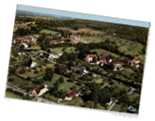The etymology of the name remains uncertain and controversial partly because of a disagreement on its orthography.
Indeed, an effort has been made to demonstrate that the origin of the name was in connection with HOMER, which could today justify – due to a fair reshuffling of things – that our Normans may comfortably fit among our Levantines, Germans and other Mediterraneans. Unfortunately there is no hope along this way in our researches. If the LHOMERS are here, authentic Gauls possibly mixed of Vikings, is because all of them covered an incredible route to finally get together, knot themselves and extend the history of the family groups that we are presenting here.

 It is said that Saint LHOMER (or LAUMER), born at Neuville la Mare in the 6th century, abbot of Micy, decided to retire in the wood of Perche and to become an hermit. On his way to Chartres this highly virtuous and bright minded man was promoted to important economic responsibilities. Notwithstanding the above, he got back to his original idea, abandoned the worldly goods and escaped from Chartres. He participated actively to the evangelisation of Normandy. Several places keep trace of his passage or and his remembrance under different orthographies (L’Homer, Lomer, Laumer, Lhaumer, Lô Omer…).
It is said that Saint LHOMER (or LAUMER), born at Neuville la Mare in the 6th century, abbot of Micy, decided to retire in the wood of Perche and to become an hermit. On his way to Chartres this highly virtuous and bright minded man was promoted to important economic responsibilities. Notwithstanding the above, he got back to his original idea, abandoned the worldly goods and escaped from Chartres. He participated actively to the evangelisation of Normandy. Several places keep trace of his passage or and his remembrance under different orthographies (L’Homer, Lomer, Laumer, Lhaumer, Lô Omer…).

He founded two monasteries.

The first in Belhomert. There it is said that, having conversed a mob of thieves, these led a number of people to him. They were rough Gauls having already resisted fiercely against the Roman invader in their impenetrable forest, guided by brave druids that nothing and nobody had been able to bend so far. Now all of them wanted to take advantage of his example and his teaching.

Saint Lhomer escaped again, troubled by so many visitors and hided himself in Corbion to build a new monastery that became Moutiers-Au-Perche.

Saint LHOMER was miraculous Saint. He displaced a chestnut that disturbed him, extinguished a big fire, opened some locked doors, turned some cold lights on, foresaw the sack of Chartres and healed some paralytics. At Pas-Saint-L’homer a protruding stone keeps track of his step. Finally there is a path in a field of the village of “la Madeleine Bouvet” where there is still a rock which is called “the fountain of St. Lhomer”. On this stone there is a hole which is said to be always full of water. According to the legend, this water has the power to heal the fevers.
It is hence well possible that our ancestors were named after one of these venerable places under this holy patronage. At the same time it could also be a Christian name given at a baptism that followed forward along the descendants.

St LHOMER, written LAUMER, is celebrated on the 19th January, the day he gave his soul at the age (it is said) of more than 100 years. His relics were transferred from Corbion to Blois in 873 by the monks who were fleeing from the Normans, in a church that became the Saint Laumer abbey. This abbey was destroyed by a fire in 1114 then re-built. It seems that the relics had been saved as they had been put in one of the new chapels in 1186 at the presence of the Count of Blois. The Benedictine monks had to quit the abbey after the revolution in 1791. Today the church is dedicated to St. Nicolas.